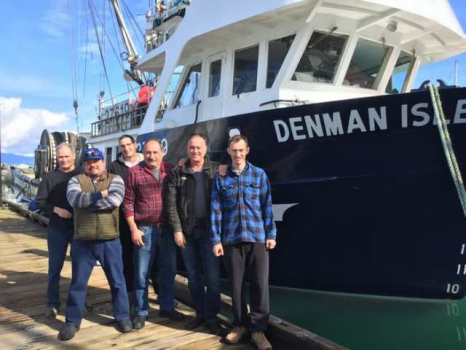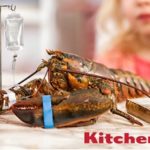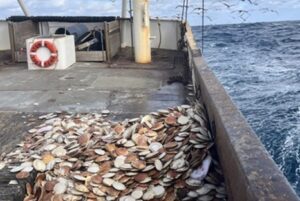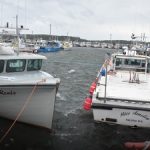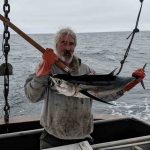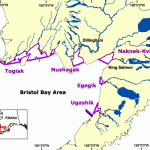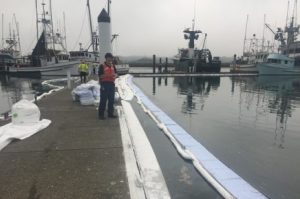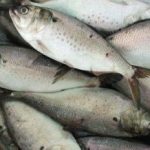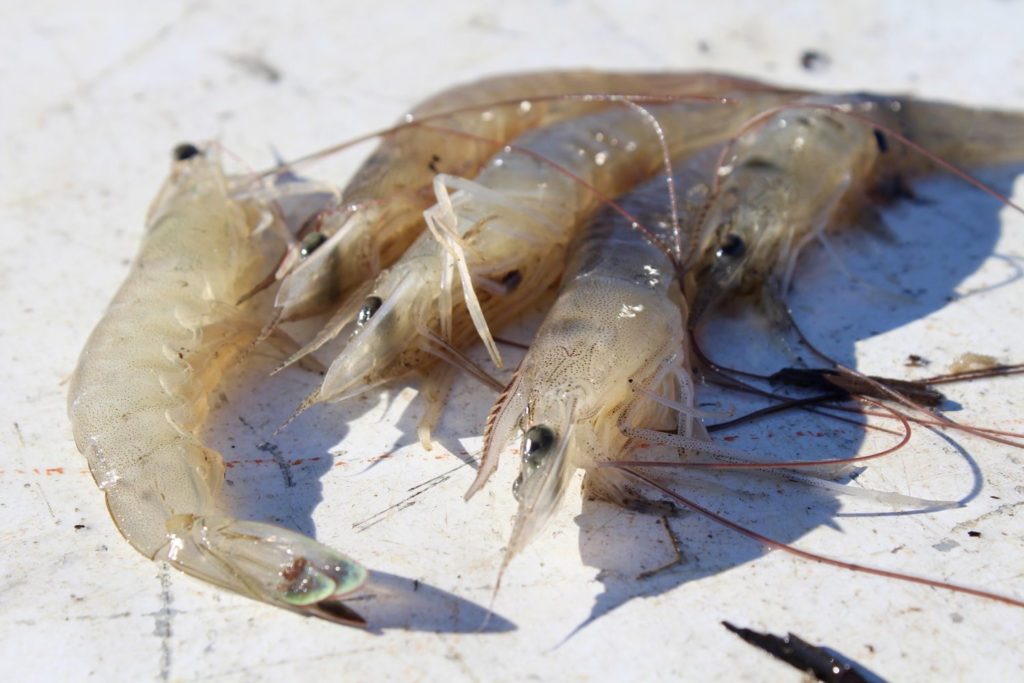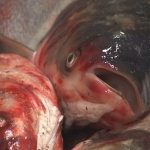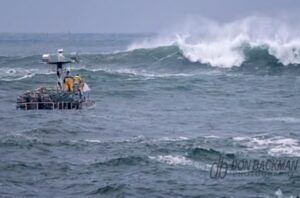Monthly Archives: March 2017
Landing Reports Indicate Violations in Alaska’s Restricted Fishing Area
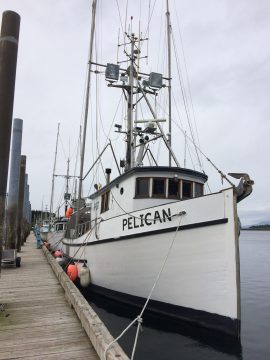 Halibut Fisherman, Andrew Halverson, a resident of Washington, was fined $5,000 for the unlawful harvest of halibut. The halibut were harvested from the closed waters defined in the Sitka Sound Local Area Management Plan (LAMP). An enforcement officer with NOAA’s Office of Law Enforcement initiated an investigation after he reviewed landing reports for the Sitka area. “OLE personnel regularly review landing reports,” said Lt. Bob Marvelle, supervisory enforcement officer for the OLE Alaska Division. “Since we’re unable to inspect every offload and landing, we review the reports to ensure compliance and identify areas of concern that need to be addressed.” Upon further investigation of the documents and log books, OLE identified that on Nov. 4, 2016, while fishing from a vessel larger than 35 feet, Halverson retained 130 pounds of halibut fished from approximately 4.3 nautical miles inside the Sitka LAMP closed area. continue reading the report here 08:05
Halibut Fisherman, Andrew Halverson, a resident of Washington, was fined $5,000 for the unlawful harvest of halibut. The halibut were harvested from the closed waters defined in the Sitka Sound Local Area Management Plan (LAMP). An enforcement officer with NOAA’s Office of Law Enforcement initiated an investigation after he reviewed landing reports for the Sitka area. “OLE personnel regularly review landing reports,” said Lt. Bob Marvelle, supervisory enforcement officer for the OLE Alaska Division. “Since we’re unable to inspect every offload and landing, we review the reports to ensure compliance and identify areas of concern that need to be addressed.” Upon further investigation of the documents and log books, OLE identified that on Nov. 4, 2016, while fishing from a vessel larger than 35 feet, Halverson retained 130 pounds of halibut fished from approximately 4.3 nautical miles inside the Sitka LAMP closed area. continue reading the report here 08:05
Coast Guard medevacs skipper suffering from chest pains 55 miles east of Gloucester, Mass.
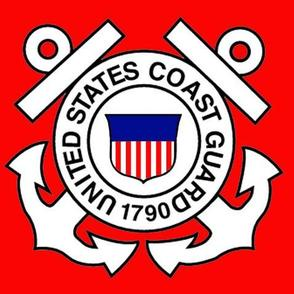 A Coast Guard aircrew medevaced a 55-year-old man suffering from chest pains Sunday evening 55 miles east of Gloucester. Coast Guard watchstanders at Sector Boston received a report at around 6:30 p.m. that the master of the 75-foot fishing vessel America, homeported in Boston, was ill and in need of medical attention. An MH-60 Jayhawk helicopter crew from Air Station Cape Cod and a 47-foot Motor Lifeboat crew from Station Gloucester launched to assist. The crew of the Coast Guard Cutter Tahoma, a 270-foot medium endurance cutter, was also diverted and assisted by relaying communications. Once the aircrew arrived, they hoisted the man and flew him to Massachusetts General Hospital. The seas were 3 to 5 feet and the winds were 25 knots at the time of the hoist. The air temperature was 26 degrees and the water temperature was 40 degrees. The man was reported to be conscious at the time of the transfer. Link 07:36
A Coast Guard aircrew medevaced a 55-year-old man suffering from chest pains Sunday evening 55 miles east of Gloucester. Coast Guard watchstanders at Sector Boston received a report at around 6:30 p.m. that the master of the 75-foot fishing vessel America, homeported in Boston, was ill and in need of medical attention. An MH-60 Jayhawk helicopter crew from Air Station Cape Cod and a 47-foot Motor Lifeboat crew from Station Gloucester launched to assist. The crew of the Coast Guard Cutter Tahoma, a 270-foot medium endurance cutter, was also diverted and assisted by relaying communications. Once the aircrew arrived, they hoisted the man and flew him to Massachusetts General Hospital. The seas were 3 to 5 feet and the winds were 25 knots at the time of the hoist. The air temperature was 26 degrees and the water temperature was 40 degrees. The man was reported to be conscious at the time of the transfer. Link 07:36
WA’s scallop quota doubled after stock recovery
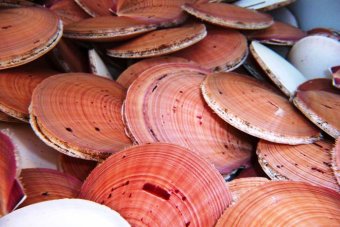 The quota for WA’s commercial scallop fishery has almost doubled this season, due to a recovery of stocks after a marine heatwave in 2010/11. Fishermen will be able to take 330 tonnes in 2017, compared to 166 tonnes last season. Department of Fisheries principal scientist Mervi Kangas said the speed of recovery in the Shark Bay fishery had quickened.”The stocks are recovering. Denham Sound, which was the key area where most of the scallop take came from, has actually recovered,” Ms Kangas said. “The northern part of Shark Bay is still recovering, but it is improving each year.” continue reading the story here 19:57
The quota for WA’s commercial scallop fishery has almost doubled this season, due to a recovery of stocks after a marine heatwave in 2010/11. Fishermen will be able to take 330 tonnes in 2017, compared to 166 tonnes last season. Department of Fisheries principal scientist Mervi Kangas said the speed of recovery in the Shark Bay fishery had quickened.”The stocks are recovering. Denham Sound, which was the key area where most of the scallop take came from, has actually recovered,” Ms Kangas said. “The northern part of Shark Bay is still recovering, but it is improving each year.” continue reading the story here 19:57

Newfoundland Hammered with Hurricane-Force Winds – 13,500 still in dark in N.L. as crews work to restore power
More than 24 hours after hurricane-force winds buffeted Newfoundland, crews are continuing efforts to restore power, with about 13,500 customers still without electricity. Newfoundland and Labrador Hydro issued a power warning noon Sunday, asking customers on the Avalon Peninsula to conserve energy to avoid straining the system as more people have their power restored. Holyrood’s Unit 1 was being brought back online slowly Sunday afternoon, delayed because of salt left on equipment left by the storm. One of the customers without power is the St. John’s airport, which is operating on backup power. Desk agents at the airport are wearing parkas because of the lack of heat and baggage carousels are out of service. Environment Canada says the wind gusts should diminish later Sunday morning, after extreme winds wreaked havoc, smashing windows and ripping apart homes. Photos, read the story here 16:52
Changes and Cancellations – NEFMC – Weather Update for Coral Workshops, Herring MSE Peer Review
 s a result of the winter storm that’s forecasted for our region on Tuesday, the New England Fishery Management Council is: (1) modifying the schedule for its two Coral Workshops; and (2) reminding members of the public who are interested in the Atlantic Herring MSE Peer Review that a webinar option is available. Here are the details. CORAL WORKSHOP #1, NEW BEDFORD, MA: This workshop will begin as planned at 9 a.m. on Monday, March 13 and extend into the early evening to accommodate as much of the original two-day agenda as possible. The second day of the workshop — Tuesday, March 14 — has been cancelled to avoid unnecessary travel. The workshop will be held at the Fairfield Inn & Suites, 185 MacArthur Drive, New Bedford, MA 02740.
s a result of the winter storm that’s forecasted for our region on Tuesday, the New England Fishery Management Council is: (1) modifying the schedule for its two Coral Workshops; and (2) reminding members of the public who are interested in the Atlantic Herring MSE Peer Review that a webinar option is available. Here are the details. CORAL WORKSHOP #1, NEW BEDFORD, MA: This workshop will begin as planned at 9 a.m. on Monday, March 13 and extend into the early evening to accommodate as much of the original two-day agenda as possible. The second day of the workshop — Tuesday, March 14 — has been cancelled to avoid unnecessary travel. The workshop will be held at the Fairfield Inn & Suites, 185 MacArthur Drive, New Bedford, MA 02740. CORAL WORKSHOP #2, PORTSMOUTH, NH: This workshop will take place on Wednesday, March 15 as originally scheduled, but the start-time has been advanced by two hours — from 9:00 a.m. to 11 a.m. — to allow additional travel time. The workshop will be held at the Sheraton Harborside, 250 Market Street, Portsmouth, NH 03801. ATLANTIC HERRING MSE PEER REVIEW: The March 13-15 MSE peer review will proceed as planned on Monday, Tuesday, and Wednesday at the Embassy Suites near Boston Logan Airport. Technical experts involved in the peer review will be traveling to and from the meeting outside of the forecasted storm window. The meeting will begin at 9 a.m. each day. ALTERNATIVES TO TRAVELING: Members of the public who are concerned about traveling may listen to the discussion via webinar or telephone. WEBINAR REGISTRATION: Online access to the meeting is available at: https://global.gotomeeting.
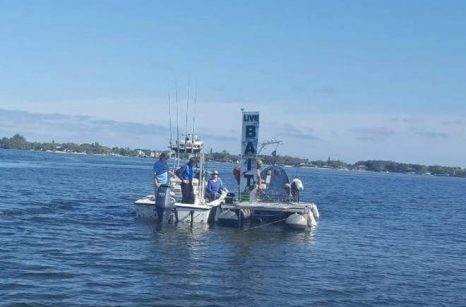
Small Scale: Two Scoops Bait Company allows anglers to spend less time looking for bait
“During the week it’s mostly guides, but on Fridays and weekends it’s a lot of guys,” said Trey Daugherty, owner and operator of Two Scoops Bait Company. “Each day more recreational guys call me, and they definitely keep me busy throughout the day.” Daugherty started his bait-selling business in the spring of last year and was so successful he picked up right where he left off early last week. As the demand for scaled sardines and other finned live bait from anglers increases, Daugherty finds himself needing to increase his supply to keep up with rising demand. “Some days I’m spending four or five hours catching bait. I’m catching about 300 to 400 dozen everywhere from Fort DeSoto all the way to Port Manatee. It’s been tough recently, and I think that’s why a lot of guys come to me,” Daugherty says. continue reading the story here 12:11
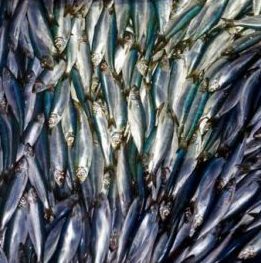
Drop in herring a mystery in Maine as bait price booms
Scientists and fishermen are trying to figure out why Maine’s Atlantic herring catch — the largest in the nation — has fallen from 103.5 million pounds in 2014 to 77.2 million last year. The per-pound price of the fish at the dock has gone up 56 percent since 2014, and that price is eventually borne by people who buy lobsters. “The whole dynamic of the fishery has changed,” said Jeff Kaelin, who works in government relations for Lund’s Fisheries, which lands herring in Maine. Kaelin, and others who work in and study the fishery, thinks climate and the way the government manages herring may have played a role in the decline of catch. Atlantic herring are managed via a quota system, and regulators have slashed the quota by more than 40 percent since the early 2000s. Last year, herring were also difficult to catch far offshore, where they are typically caught in large amounts, but they were abundant closer to the New England coast. This led to a bait shortage, because fishermen are only allowed to catch a certain percentage of their quotas in inshore waters. Read the story here 10:15
An Interview with Captain Dave Marciano: Gloucester fishing comes into focus on new season of ‘Wicked Tuna’
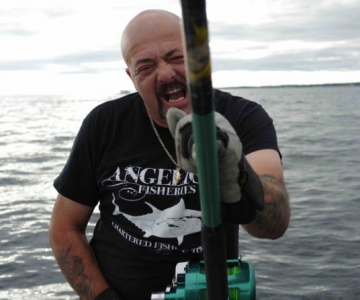 The captains of Wicked Tuna, Nat Geo’s top-rated reality series, return for a sixth season Sunday, March 12 at 9 p.m. The cutthroat show about angling off the coast of Gloucester, Massachusetts, pits captains and their boats against each other in a no-holds-barred search for the largest tuna. And that’s largest in terms of size and profits. Among the returning captains are Tyler McLaughlin of the Pinwheel, Dave Marciano of the Hard Merchandise, TJ Ott of the Hot Tuna, Paul Hebert of the Wicked Pissah and Dave Carraro of the FV-Tuna.com. They might be friendly on land, but in the open, choppy waters, they are competitors with the final prize in mind. Recently, Hollywood Soapbox spoke with Marciano about the upcoming season and the bounty of fish that actually changed the angling for everyone. Answers have been edited for style and brevity. Read the interview here 14:02
The captains of Wicked Tuna, Nat Geo’s top-rated reality series, return for a sixth season Sunday, March 12 at 9 p.m. The cutthroat show about angling off the coast of Gloucester, Massachusetts, pits captains and their boats against each other in a no-holds-barred search for the largest tuna. And that’s largest in terms of size and profits. Among the returning captains are Tyler McLaughlin of the Pinwheel, Dave Marciano of the Hard Merchandise, TJ Ott of the Hot Tuna, Paul Hebert of the Wicked Pissah and Dave Carraro of the FV-Tuna.com. They might be friendly on land, but in the open, choppy waters, they are competitors with the final prize in mind. Recently, Hollywood Soapbox spoke with Marciano about the upcoming season and the bounty of fish that actually changed the angling for everyone. Answers have been edited for style and brevity. Read the interview here 14:02
Coast Guard medevacs fisherman near Cold Bay, Alaska
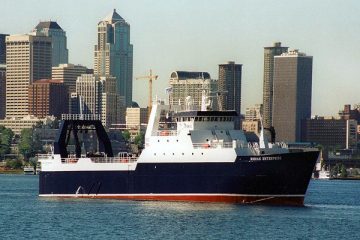 A Coast Guard Air Station Kodiak MH-65 Dolphin rescue helicopter crew medevaced a man from the 252-foot fishing vessel Kodiak Enterprise approximately 40 miles north of Cold Bay, Alaska, Friday afternoon. The rescue helicopter crew transported the 55-year-old fisherman to Cold Bay and were met by LifeMed Alaska personnel who transferred the patient to Anchorage for further medical care. Watchstanders at Coast Guard 17th District in Juneau received notification from Health Force Partners requesting a medevac for a crewmember who was reportedly suffering from an abdominal medical condition. The duty flight surgeon recommended the medevac and the helicopter crew was dispatched from Dutch Harbor. Weather on scene during the time of the medevac was reported as 15-mph winds with 3-foot seas and 10 miles of visibility. Link 13:14
A Coast Guard Air Station Kodiak MH-65 Dolphin rescue helicopter crew medevaced a man from the 252-foot fishing vessel Kodiak Enterprise approximately 40 miles north of Cold Bay, Alaska, Friday afternoon. The rescue helicopter crew transported the 55-year-old fisherman to Cold Bay and were met by LifeMed Alaska personnel who transferred the patient to Anchorage for further medical care. Watchstanders at Coast Guard 17th District in Juneau received notification from Health Force Partners requesting a medevac for a crewmember who was reportedly suffering from an abdominal medical condition. The duty flight surgeon recommended the medevac and the helicopter crew was dispatched from Dutch Harbor. Weather on scene during the time of the medevac was reported as 15-mph winds with 3-foot seas and 10 miles of visibility. Link 13:14
Coast Guard medevacs skipper from fishing boat in the Gulf
 The Coast Guard medevacked a 29-year-old man Friday from a 72-foot commercial fishing vessel 23 miles southwest of Sanibel. At 4:30 a.m. watch standers from Sector St. Petersburg received a VHF-FM marine band radio call from the captain of the commercial fishing vessel Sea Explorer, stating he was experiencing chest pains and was in need of emergency medical attention. A flight surgeon was notified and recommended the man be medevacked. An MH-60 Jayhawk helicopter crew from Air Station Clearwater and a 45-foot Response Boat-Medium boat crew from Station Fort Myers Beach were launched and the area’s Marine Emergency Response Team was activated. At 5:31 a.m. the Coast Guard boat crew arrived on scene with Lee County EMS aboard. The man was transported to Station Fort Myers Beach in stable condition where EMS awaited to transport him for further medical assistance. Link 13:03
The Coast Guard medevacked a 29-year-old man Friday from a 72-foot commercial fishing vessel 23 miles southwest of Sanibel. At 4:30 a.m. watch standers from Sector St. Petersburg received a VHF-FM marine band radio call from the captain of the commercial fishing vessel Sea Explorer, stating he was experiencing chest pains and was in need of emergency medical attention. A flight surgeon was notified and recommended the man be medevacked. An MH-60 Jayhawk helicopter crew from Air Station Clearwater and a 45-foot Response Boat-Medium boat crew from Station Fort Myers Beach were launched and the area’s Marine Emergency Response Team was activated. At 5:31 a.m. the Coast Guard boat crew arrived on scene with Lee County EMS aboard. The man was transported to Station Fort Myers Beach in stable condition where EMS awaited to transport him for further medical assistance. Link 13:03
Maine Fisherman details nearly losing his hand, amazing recovery
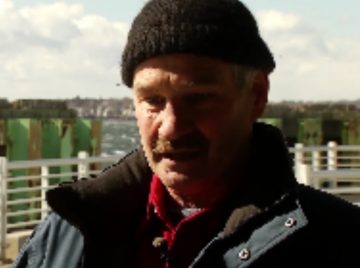 Nearly two months ago, a scallop fisherman got his lower arm caught in a hydraulic winch. It nearly took his hand off. Doctors were able to re-attach it, in one of the most difficult surgeries they’d ever performed. In 35 years of fishing off the coast of Maine, Rick Callow says he’s been injured many times, but nothing like what happened to him seven weeks ago on his fishing boat, the E Cosi. He and his crew were using a winch to haul in a catch of scallops when his glove got caught in the capstan, the revolving cylinder used to wind the cable. “It jerked my hand towards the capstan,” Callow said. “Pinched my glove in there, just the tip of my index finger.” Seconds later, the machine was ripping through his lower arm and hand. Video, read the rest of the story here 11:05
Nearly two months ago, a scallop fisherman got his lower arm caught in a hydraulic winch. It nearly took his hand off. Doctors were able to re-attach it, in one of the most difficult surgeries they’d ever performed. In 35 years of fishing off the coast of Maine, Rick Callow says he’s been injured many times, but nothing like what happened to him seven weeks ago on his fishing boat, the E Cosi. He and his crew were using a winch to haul in a catch of scallops when his glove got caught in the capstan, the revolving cylinder used to wind the cable. “It jerked my hand towards the capstan,” Callow said. “Pinched my glove in there, just the tip of my index finger.” Seconds later, the machine was ripping through his lower arm and hand. Video, read the rest of the story here 11:05
There is a GoFundMe page set up to help with the medical costs. Some of the pictures on that site are graphic.
Labour Relations Board orders release of FFAW/ASP lists of inshore harvesters
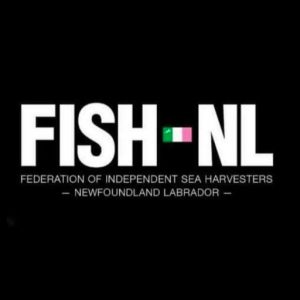 The Federation of Independent Sea Harvesters of Newfoundland and Labrador (FISH-NL) is pleased with the latest order of the province’s Labour Relations Board regarding the release of membership lists of commercial inshore harvesters. After hearing arguments on Friday morning, by late Friday afternoon the board ordered the FFAW to turn over its list of commercial inshore harvesters who were members of the FFAW between Jan. 1, 2015 and Dec. 30, 2016 to its investigating officer. The Board also ordered ASP (the Association of Seafood Producers) to hand over its list of inshore harvesters on whose behalf members of the association collected and remitted FFAW union dues between Jan. 1, 2015 to Dec. 30, 2016 to its investigating officer. Read the press release here 10:22
The Federation of Independent Sea Harvesters of Newfoundland and Labrador (FISH-NL) is pleased with the latest order of the province’s Labour Relations Board regarding the release of membership lists of commercial inshore harvesters. After hearing arguments on Friday morning, by late Friday afternoon the board ordered the FFAW to turn over its list of commercial inshore harvesters who were members of the FFAW between Jan. 1, 2015 and Dec. 30, 2016 to its investigating officer. The Board also ordered ASP (the Association of Seafood Producers) to hand over its list of inshore harvesters on whose behalf members of the association collected and remitted FFAW union dues between Jan. 1, 2015 to Dec. 30, 2016 to its investigating officer. Read the press release here 10:22
NOAA tests camera systems to monitor fish catch
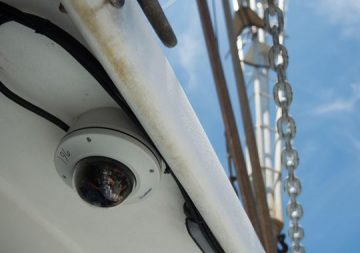 When we think of technological innovators, most picture daring entrepreneurs and venture capitalists who make clever devices for their investors. However, in the Bering Sea and other waters off the coast of Alaska, NOAA Fisheries scientists are testing innovative technologies, tools and methods to keep U.S. fisheries strong and profitable. Together with the fishing industry, we have made real progress advancing the use of camera systems to monitor fish catch and identify the best ways to safely release unwanted species. These systems help us count fish both in the net and when it is hauled onto the deck of a fishing vessel. Our scientists have designed software applications to automate the process of identifying fish species and measure fish length. Until recently, obtaining this critical information for fisheries stock assessments was only possible with the help of a human observer. continue reading the story here 09:40
When we think of technological innovators, most picture daring entrepreneurs and venture capitalists who make clever devices for their investors. However, in the Bering Sea and other waters off the coast of Alaska, NOAA Fisheries scientists are testing innovative technologies, tools and methods to keep U.S. fisheries strong and profitable. Together with the fishing industry, we have made real progress advancing the use of camera systems to monitor fish catch and identify the best ways to safely release unwanted species. These systems help us count fish both in the net and when it is hauled onto the deck of a fishing vessel. Our scientists have designed software applications to automate the process of identifying fish species and measure fish length. Until recently, obtaining this critical information for fisheries stock assessments was only possible with the help of a human observer. continue reading the story here 09:40
Canada’s trade minister promises Brits cut-price lobster and maple syrup if free trade deal follows Brexit
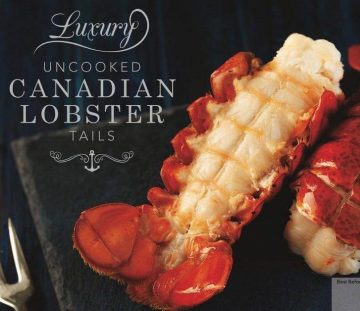 Francois Philippe Champagne said he hoped the UK copied the free trade deal agreed between his country and the EU when it strikes out alone. And he revealed he had met Trade Secretary Liam Fox three times to discuss future relationships. He said a deal would mean “more and better choice for consumers”. He said: “A company in Wales is importing maple syrup from Canada and paying an 8 per cent import duty.” “That duty would go down to 0 per cent if there is a free trade deal. “If you’re in the UK and love Canadian lobster, you have an import duty of up to 25 percent today. “On day one that would go down to zero.” Link 09:06
Francois Philippe Champagne said he hoped the UK copied the free trade deal agreed between his country and the EU when it strikes out alone. And he revealed he had met Trade Secretary Liam Fox three times to discuss future relationships. He said a deal would mean “more and better choice for consumers”. He said: “A company in Wales is importing maple syrup from Canada and paying an 8 per cent import duty.” “That duty would go down to 0 per cent if there is a free trade deal. “If you’re in the UK and love Canadian lobster, you have an import duty of up to 25 percent today. “On day one that would go down to zero.” Link 09:06
Livelihoods Threatened, Angry fishermen in Sonora attack federal officials
 Angry fishermen in Sonora attacked environmental officials Wednesday night and torched 15 vehicles, including trucks, boats, and ATVs. Worried that their livelihoods were being threatened by federal environmental and health assessment programs, the fishermen, from Golfo de Santa Clara, physically attacked 28 officials from the federal environmental agency Profepa, the National Protected Areas Commission and the National Aquaculture and Fisheries Commission. The fishermen’s beef is that they want to be able to fish corvina, but the issuing of a permit by the National Aquaculture and Fisheries Commission has been delayed. New regulations require that an environmental impact statement must be approved by the Environmental Secretariat before the fishing vessels sail. Read the rest here 08:38
Angry fishermen in Sonora attacked environmental officials Wednesday night and torched 15 vehicles, including trucks, boats, and ATVs. Worried that their livelihoods were being threatened by federal environmental and health assessment programs, the fishermen, from Golfo de Santa Clara, physically attacked 28 officials from the federal environmental agency Profepa, the National Protected Areas Commission and the National Aquaculture and Fisheries Commission. The fishermen’s beef is that they want to be able to fish corvina, but the issuing of a permit by the National Aquaculture and Fisheries Commission has been delayed. New regulations require that an environmental impact statement must be approved by the Environmental Secretariat before the fishing vessels sail. Read the rest here 08:38
German company eyes wind farm project off Fire Island
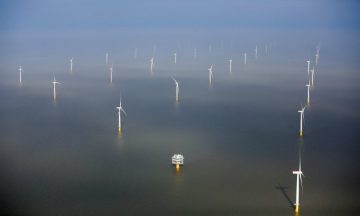 “The idea that you can just show up and stick a flag in the ocean floor and say it’s mine without regard to the fishing community it will displace is unconscionable and un-American,” said Bonnie Brady, executive director of the Long Island Commercial Fishing Association.A German renewable-energy company has submitted an unsolicited bid for more than 40,000 acres of water rights due south of Fire Island for the first phase of a wind-turbine array of up to 400 megawatts. Maps submitted with the project indicate it would place 30 to 50 turbines around 600 feet tall in an area that extends from Bayport to Moriches, starting around 12 miles from shore. The project would be east of another wind-energy area that was federally auctioned in December to Norway-based Statoil for $42 million. Both projects, which would require numerous state and federal permits, are in areas considered vital to fishing interests; the Statoil project is already the subject of a federal lawsuit seeking to block it and preserve squid, scallop and bottom-fishing grounds. Called the NY4 Excelsior Wind Park, the latest project is being proposed by PNE Wind, a German developer of onshore and offshore wind projects with a U.S. base in Chicago. (we are opposed) Read the story here 07:54
“The idea that you can just show up and stick a flag in the ocean floor and say it’s mine without regard to the fishing community it will displace is unconscionable and un-American,” said Bonnie Brady, executive director of the Long Island Commercial Fishing Association.A German renewable-energy company has submitted an unsolicited bid for more than 40,000 acres of water rights due south of Fire Island for the first phase of a wind-turbine array of up to 400 megawatts. Maps submitted with the project indicate it would place 30 to 50 turbines around 600 feet tall in an area that extends from Bayport to Moriches, starting around 12 miles from shore. The project would be east of another wind-energy area that was federally auctioned in December to Norway-based Statoil for $42 million. Both projects, which would require numerous state and federal permits, are in areas considered vital to fishing interests; the Statoil project is already the subject of a federal lawsuit seeking to block it and preserve squid, scallop and bottom-fishing grounds. Called the NY4 Excelsior Wind Park, the latest project is being proposed by PNE Wind, a German developer of onshore and offshore wind projects with a U.S. base in Chicago. (we are opposed) Read the story here 07:54
MD lawmakers call hearing on DNR crab manager’s firing
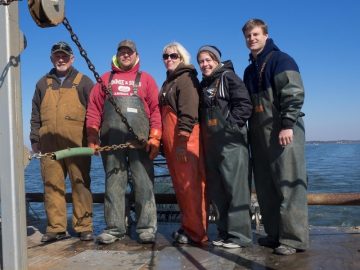 Maryland lawmakers have scheduled a special hearing to investigate the Hogan administration’s firing of the state’s longtime manager of the blue crab fishery. The House Environment and Transportation Committee and the Senate Education, Health, and Environmental Affairs Committee plan to meet jointly Monday to seek more information on the termination last month of Brenda Davis. A 28-year employee of the state Department of Natural Resources, Davis was dismissed Feb. 21 after a small group of watermen complained about her and crabbing regulations to Gov. Larry Hogan. Sen. Paul Pinsky, a Prince George’s County Democrat, said the committees want to know whether politics is influencing science and scientific decision-making in the department. “We have to shine a light on the firing of Brenda Davis,” Pinsky said Thursday. “It seems that the Hogan administration has made her a sacrificial lamb to a small group of watermen who have, to date, not been able to change state crabbing policy.” continue reading the story here 20:17
Maryland lawmakers have scheduled a special hearing to investigate the Hogan administration’s firing of the state’s longtime manager of the blue crab fishery. The House Environment and Transportation Committee and the Senate Education, Health, and Environmental Affairs Committee plan to meet jointly Monday to seek more information on the termination last month of Brenda Davis. A 28-year employee of the state Department of Natural Resources, Davis was dismissed Feb. 21 after a small group of watermen complained about her and crabbing regulations to Gov. Larry Hogan. Sen. Paul Pinsky, a Prince George’s County Democrat, said the committees want to know whether politics is influencing science and scientific decision-making in the department. “We have to shine a light on the firing of Brenda Davis,” Pinsky said Thursday. “It seems that the Hogan administration has made her a sacrificial lamb to a small group of watermen who have, to date, not been able to change state crabbing policy.” continue reading the story here 20:17
Pendulum ticks toward commercial fishermen as Cook Inlet meeting wraps
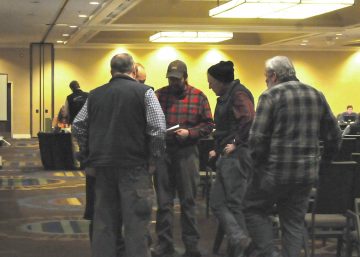 The Board of Fisheries pendulum may have swung, but it’s still attached to the same clockwork. The triennial Upper Cook Inlet Board of Fisheries meeting ended March 8, leaving behind a big fish goal for the Kenai River late king salmon run, potential expanded hours for the Cook Inlet drift and setnet fleets, and a brand new early run king salmon plan on the Kenai River. Though the tone was mild compared to that of 2014, the same grudges against the Alaska Department of Fish and Game, the board, and among rival user groups are bubbling away. After three years of buildup following an emotional 2014 meeting, the 2017 marathon was sparsely attended and largely civil, focusing mainly on what ADFG Commercial Fisheries Division Operations Manager Forrest Bowers called “minor changes.” “This early run king plan, that’s probably the biggest change outside the large fish goal,” Bowers said. “With the late run sockeye plan, there was a long discussion but at the end of the day it didn’t really do much. The late run king plan, I mean, again, long discussion, relaxed the August restriction a bit, but it’s fundamentally the same.” continue reading the article here 13:25
The Board of Fisheries pendulum may have swung, but it’s still attached to the same clockwork. The triennial Upper Cook Inlet Board of Fisheries meeting ended March 8, leaving behind a big fish goal for the Kenai River late king salmon run, potential expanded hours for the Cook Inlet drift and setnet fleets, and a brand new early run king salmon plan on the Kenai River. Though the tone was mild compared to that of 2014, the same grudges against the Alaska Department of Fish and Game, the board, and among rival user groups are bubbling away. After three years of buildup following an emotional 2014 meeting, the 2017 marathon was sparsely attended and largely civil, focusing mainly on what ADFG Commercial Fisheries Division Operations Manager Forrest Bowers called “minor changes.” “This early run king plan, that’s probably the biggest change outside the large fish goal,” Bowers said. “With the late run sockeye plan, there was a long discussion but at the end of the day it didn’t really do much. The late run king plan, I mean, again, long discussion, relaxed the August restriction a bit, but it’s fundamentally the same.” continue reading the article here 13:25
Sea lions hinder salmon conservation
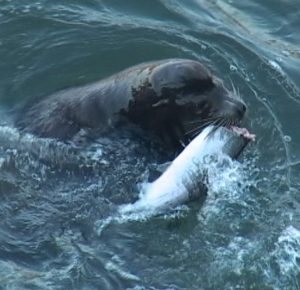 California and Steller sea lions took a bigger bite out of last year’s salmon run than in any previous year, according to a new federal report. 2015 saw a bigger run, with more than 239,000 chinook and steelhead migrating past Bonneville Dam. That year, the total number of salmon that sea lions ate was he largest ever recorded. The Army Corps of Engineers recorded more than 260 sea lions eating more than 10,000 fish from January to June 2015. The 2016 salmon run was far smaller, but the sea lions’ appetite for salmon didn’t shrink much. They still ate more than 9,500 fish, nearly 6 percent of the run. That’s the largest share of the run eaten by the large marine mammals since Army Corps scientists started watching 15 years ago. Read the rest here 12:43
California and Steller sea lions took a bigger bite out of last year’s salmon run than in any previous year, according to a new federal report. 2015 saw a bigger run, with more than 239,000 chinook and steelhead migrating past Bonneville Dam. That year, the total number of salmon that sea lions ate was he largest ever recorded. The Army Corps of Engineers recorded more than 260 sea lions eating more than 10,000 fish from January to June 2015. The 2016 salmon run was far smaller, but the sea lions’ appetite for salmon didn’t shrink much. They still ate more than 9,500 fish, nearly 6 percent of the run. That’s the largest share of the run eaten by the large marine mammals since Army Corps scientists started watching 15 years ago. Read the rest here 12:43
Atlantic Fisheries Fund: Atlantic Canada fish and seafood sector nets $325M from Ottawa
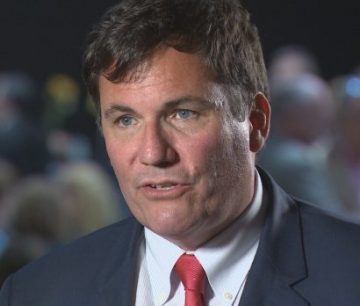 The funding, called the Atlantic Fisheries Fund, was announced Friday by Fisheries, Oceans and Canadian Coast Guard Minister Dominic LeBlanc. According to a release, the fund has a focus “to drive innovation” in the sector. In 2015, the landed value for Canada’s Atlantic commercial fisheries was $2.8 billion. “The numbers speak for themselves,” LeBlanc told reporters, adding 58,000 people in Atlantic Canada are employed in the fishing industry. The government will work with the Atlantic provinces to determine how the fund will work. LeBlanc said the money would be available to all Atlantic provinces to be used in the ways they need. Read the rest of the story here 12:12 $100M for N.L. in new fisheries innovation fund; CETA fund dead Read the story here 17:30
The funding, called the Atlantic Fisheries Fund, was announced Friday by Fisheries, Oceans and Canadian Coast Guard Minister Dominic LeBlanc. According to a release, the fund has a focus “to drive innovation” in the sector. In 2015, the landed value for Canada’s Atlantic commercial fisheries was $2.8 billion. “The numbers speak for themselves,” LeBlanc told reporters, adding 58,000 people in Atlantic Canada are employed in the fishing industry. The government will work with the Atlantic provinces to determine how the fund will work. LeBlanc said the money would be available to all Atlantic provinces to be used in the ways they need. Read the rest of the story here 12:12 $100M for N.L. in new fisheries innovation fund; CETA fund dead Read the story here 17:30
Maine’s most fertile scalloping ground to close on Sunday
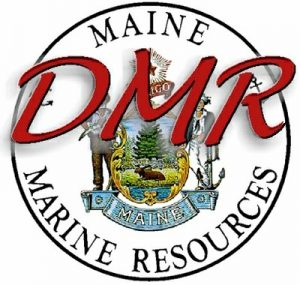 Fishing regulators are shutting down Maine’s most productive scallop fishing grounds for the season to protect the valuable shellfish. Cobscook Bay is the most important scalloping area along the Maine cost. Maine marine resources Commissioner Patrick Keliher says it needs to be shut down for the season on Sunday to make sure it stays fertile. Maine’s scallop season runs from December to April, but the closure of Cobscook typically represents a slowing down of the season. The state frequently shuts down scalloping areas early to conserve them for future years. Maine fishermen harvested more than 530,000 pounds of scallops in 2016. That was the second-most productive scallop fishing year in the state since 2001. (AP) link 11:18
Fishing regulators are shutting down Maine’s most productive scallop fishing grounds for the season to protect the valuable shellfish. Cobscook Bay is the most important scalloping area along the Maine cost. Maine marine resources Commissioner Patrick Keliher says it needs to be shut down for the season on Sunday to make sure it stays fertile. Maine’s scallop season runs from December to April, but the closure of Cobscook typically represents a slowing down of the season. The state frequently shuts down scalloping areas early to conserve them for future years. Maine fishermen harvested more than 530,000 pounds of scallops in 2016. That was the second-most productive scallop fishing year in the state since 2001. (AP) link 11:18
Cape officials push for Sea Grant program’s survival
 Judith McDowell and Bob Rheault were both drawn to Washington this week for the same reason: They wanted to salvage a threatened federal program that plays a key role in Cape Cod’s marine-dependent industries. McDowell, the director of the Woods Hole Sea Grant program, and Rheault, the executive director of the East Coast Shellfish Growers Association, were hoping to save the national Sea Grant program from elimination. The Washington Post reported last week that the program’s $73 million budget is part of a proposed 18 percent cut to the National Oceanic and Atmospheric Administration. McDowell said she couldn’t comment on a budget cut she said hadn’t been officially released but was leaked to news organizations. But Rheault, who was making the rounds of congressional offices this week, was highly critical of the proposal to scrap Sea Grant, calling it a “job killer.” His time in D.C. revealed there might be a chance the program, which President Lyndon Johnson created in 1966, could be saved, Rheault said. read the story here 10:41
Judith McDowell and Bob Rheault were both drawn to Washington this week for the same reason: They wanted to salvage a threatened federal program that plays a key role in Cape Cod’s marine-dependent industries. McDowell, the director of the Woods Hole Sea Grant program, and Rheault, the executive director of the East Coast Shellfish Growers Association, were hoping to save the national Sea Grant program from elimination. The Washington Post reported last week that the program’s $73 million budget is part of a proposed 18 percent cut to the National Oceanic and Atmospheric Administration. McDowell said she couldn’t comment on a budget cut she said hadn’t been officially released but was leaked to news organizations. But Rheault, who was making the rounds of congressional offices this week, was highly critical of the proposal to scrap Sea Grant, calling it a “job killer.” His time in D.C. revealed there might be a chance the program, which President Lyndon Johnson created in 1966, could be saved, Rheault said. read the story here 10:41
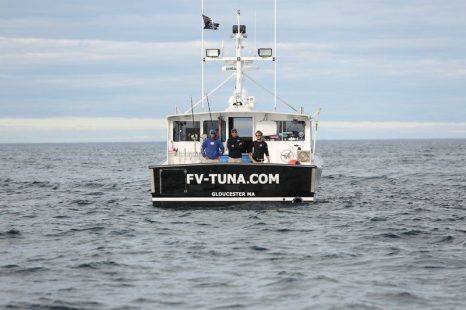
Sunday Night: Rockporter joins sixth season of ‘Wicked Tuna’
The intense work of Gloucester’s now famed blue-fin fishermen will be showcased again when the international hit television show “Wicked Tuna,” kicks off its sixth season Sunday night on the National Geographic channel. Gloucester Capt. Dave Carraro of the FV-Tuna.com once again won the competition last season, but just barely, with a total catch value of $104,785. Just $174 behind was Capt. Paul Hebert, also of Gloucester, who at one time was part of Carraro’s crew. He now captains his own fishing vessel, the Wicked Pissah. “We won the last three of the five seasons, and this year we are going to have a bigger target on our back now more than ever before,” said Carraro of his crew. “We are the New England Patriots of the fleet.” The National Geographic series airs internationally in 171 countries and in 45 languages. continue reading the story here 09:21
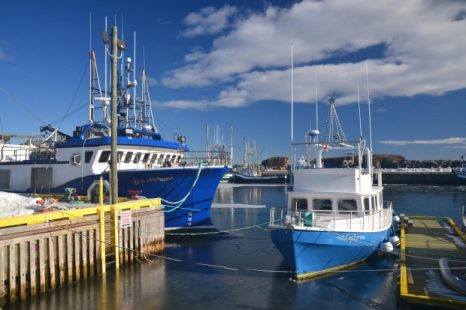
Not what I’m seeing: Crab fisherman thinks stock healthier than scientists say
Port de Grave snow crab fisherman says he’s baffled by a bleak stock assessment recently released by the Department of Fisheries and Oceans. While federal scientists said there has been a whopping 40 per cent decline in the amount of harvestable crab off the coast of Newfoundland and Labrador, Dwight Petten says that doesn’t match what he is seeing on the water. Petten, 51, has been fishing for a quarter century. He and his 27-year-old son own two boats, employ six people and have a 500,000-pound quota which they caught easily in 2016. “We found catch rates the best we’ve ever had, so we’re not seeing what the scientists is saying is happening,” he told the St. John’s Morning Show. Petten, who fishes in Area 3L, from Bonavista to Cape Race, said he is seeing lots of healthy crab, despite the assertion by scientists that there are few small crab to replace the mature stock. continue reading the story here 07:51
Bill would extend shrimping season in portion of Mississippi Sound
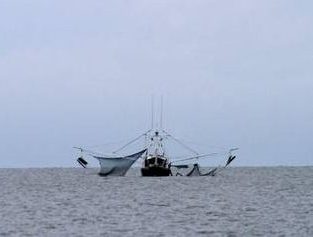 A bill that would open part of the Mississippi Sound a month earlier than the traditional June start of shrimping season is headed to Gov. Phil Bryant. Shrimp season in the Sound south of the Intracoastal Waterway, which essentially divides the Sound, usually closes April 30. North of the Intracoastal Waterway, the season closes Dec. 31. If Bryant signs SB 2683, which was authored by Sen. Tommy Gollott, R-Biloxi, the season in the part of the southern Sound that is east of the Gulfport ship channel could remain open year-round. Department of Marine Resources Executive Director Jamie Miller said the measure is aimed at helping the smaller shrimp boats that make up the majority of the Mississippi fleet. Those boats can’t go out as far as the larger, steel-hulled boats that can fish the deeper waters of the open Gulf. “It’s just another opportunity for those shrimpers who don’t have large boats,” he said. continue reading the story here 21:53
A bill that would open part of the Mississippi Sound a month earlier than the traditional June start of shrimping season is headed to Gov. Phil Bryant. Shrimp season in the Sound south of the Intracoastal Waterway, which essentially divides the Sound, usually closes April 30. North of the Intracoastal Waterway, the season closes Dec. 31. If Bryant signs SB 2683, which was authored by Sen. Tommy Gollott, R-Biloxi, the season in the part of the southern Sound that is east of the Gulfport ship channel could remain open year-round. Department of Marine Resources Executive Director Jamie Miller said the measure is aimed at helping the smaller shrimp boats that make up the majority of the Mississippi fleet. Those boats can’t go out as far as the larger, steel-hulled boats that can fish the deeper waters of the open Gulf. “It’s just another opportunity for those shrimpers who don’t have large boats,” he said. continue reading the story here 21:53
Fish fight: Scientists battle over the true harm of mercury in tuna
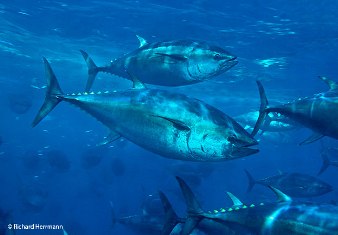 Molly Lutcavage thought she had a deal. For more than a decade, she had collected hundreds of tissue samples from bluefin tuna in hopes of settling a question that has long vexed pregnant women and the parents of young children: Should they eat the big fish, a beneficial source of protein and fatty acids? Or did mercury contamination make them too dangerous? Lutcavage hoped to test the theory that selenium, a key chemical found in tuna, prevents mercury from being transferred to the people who eat them and that, therefore, the fish are safe to eat. So she gave her hard-won samples to a colleague, Nick Fisher, to analyze in his lab. But Fisher, it seems, didn’t have as much interest in Lutcavage’s selenium theory. Two years later, he produced a study focused almost exclusively on his own hypothesis: that lowering pollution emissions from power plants reduced the levels of mercury in bluefin tuna. Lutcavage was furious, and the two scientists went to war. continue reading the article here 14:55
Molly Lutcavage thought she had a deal. For more than a decade, she had collected hundreds of tissue samples from bluefin tuna in hopes of settling a question that has long vexed pregnant women and the parents of young children: Should they eat the big fish, a beneficial source of protein and fatty acids? Or did mercury contamination make them too dangerous? Lutcavage hoped to test the theory that selenium, a key chemical found in tuna, prevents mercury from being transferred to the people who eat them and that, therefore, the fish are safe to eat. So she gave her hard-won samples to a colleague, Nick Fisher, to analyze in his lab. But Fisher, it seems, didn’t have as much interest in Lutcavage’s selenium theory. Two years later, he produced a study focused almost exclusively on his own hypothesis: that lowering pollution emissions from power plants reduced the levels of mercury in bluefin tuna. Lutcavage was furious, and the two scientists went to war. continue reading the article here 14:55
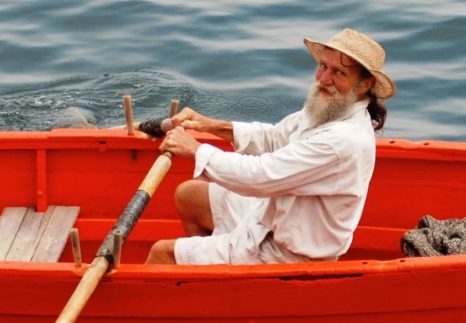
Eddie Ritter, the last of the Provincetown dory fishermen, dies at 72
Eddie Ritter, the town’s iconic fisherman who was often painted and photographed rowing his orange dory through Provincetown Harbor, led the Flounder Flop at the Old Colony Tap and was a veteran of the Vietnam War, died of cancer at home on Saturday, March 4. He was 72 years old. Ritter was drafted into the Army and was part of a reconnaissance platoon until 1967. Two years after he got out, a friend told him about Provincetown. He came to town as a visitor for a few years, moving permanently in 1974 or 1975, after Joan Connors, the mother of their son, Sasha, moved to Provincetown. It was here that he found his sea legs through a friend who was working aboard the commercial vessel Cap’n Bill. Ritter was asked if he wanted to go scalloping. It was a life-altering trip — he was hooked. Though he was taken with fishing, he didn’t want to spend all his time on big commercial vessels. Ritter wanted to fish from a dory, a boat with a flat bottom, high sides and a sharp bow. Read this interesting story here, and lets celebrate the life of Eddie Ritter, P-Towns last dory man. 14:32






